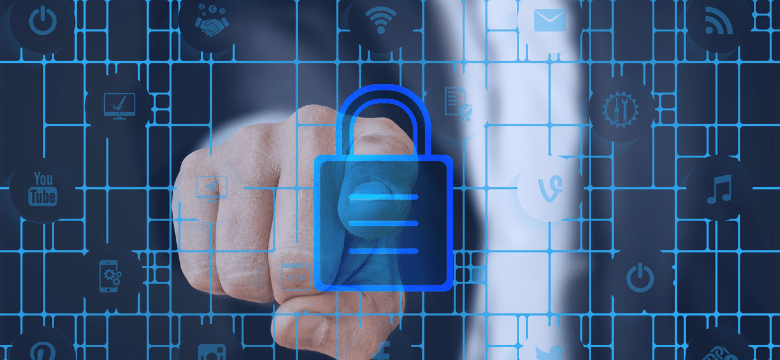









In 2024, US Cybersecurity Threats transformed for the worse. According to a December 2024 Forbes article, ransomware exposure costs U.S. businesses an estimated $124.2 billion annually.. If you are a decision maker and are not in deliberation, you ought to be.
It’s no longer simply about protecting your servers and updating your antivirus software. Nowadays, cybersecurity is a matter of strategic risk. It directly threatens the financial, reputational, operational, and market standing of a company.
The somber truth is that American technology companies remain some of the most vulnerable globally and this situation will worsen as we approach 2025. This document seeks to understand why the issue has become so bad, what has shifted, and what do we need to change as leaders.
Cyberattacks are a product of multiple forces at play. A combination of cyber threats and the constantly changing infrastructure of a business has created a plethora of vulnerabilities. In this section, we will delve deeper into the causes of this storm.
With the progression of cloud-based systems and SaaS tools, modern organizations are using a myriad of mobile applications and APIs. While other technologies lead to the advancement and growth of a business, it also brings harmful consequences in the form of potential cybersecurity threats.
Every exposed API, every enabled endpoint, and every integrated service heightens the risk of an efficient cyber-attack. Companies are always inviting new vulnerabilities without any protective measures being integrated into the system.
The idea of a secure corporate environment has been modified greatly due to remote working. Nowadays educational, professional, and recreational spaces have all blended together which causes untrusted networks to become more and more inefficient. Employees are using personal devices to connect to untrusted networks without any protective measures and this allows for untrusted access to the corporate infrastructure.
There is a bigger dependency on behavioral security, as the corporate environment becomes more unprotected. Threat detection and blocking also becomes harder, which poses a risk to the system.
Cybercriminals are increasingly leveraging automation and AI to scale their attacks with great efficiency. AI can impersonate an executive by creating a deepfake, instantly crafting phishing emails that pass verification, and scanning for easy-to-exploit systems at a pace faster than traditional scanning tools.
Single hackers are no longer the concern. It’s well organized, financially enabled, and sophisticated cybercrime gangs and sponsored nation-state adversaries—and they have even greater agility, speed, and resolve.
International political disputes have infused technology. American businesses and infrastructure are under direct assault not just to make money through industrial espionage, but to inflict damage with the help of state-sponsored actors. Cyberwarfare has expanded to include critical infrastructure, supply chains, intellectual property, and everything else.
This amplifies danger and increases unpredictability while blurring the boundaries of time and frequency for attacks, making them far more potent than anything that has been witnessed.
In today’s economy, data is the most valuable business asset. From customer profiles and behavioral analytics to proprietary algorithms and intellectual property, data is at the heart of every tech company’s competitive edge.
Unfortunately, that also makes it the most attractive target. Whether it’s sold on the dark web, held for ransom, or leaked to competitors, compromised data can set a business back years in development, trust, and revenue.
Learn more: Combating Online Fraud: Cybersecurity for E-commerce Businesses
There’s a reason U.S. tech companies are taking the brunt of these attacks—it’s not just bad luck.
American firms are often the first to deploy bleeding-edge technologies. Whether it’s AI, quantum computing, or edge-based automation, innovation moves fast. But security protocols often lag behind, especially when speed to market is prioritized.
That gap between innovation and security is where attackers move in.
U.S. firms are responsible for a significant portion of the world’s technological R&D. The algorithms, source code, blueprints, and trade secrets housed within your systems are worth millions—sometimes billions. And threat actors know it.
Whether for competitive advantage or geopolitical leverage, stealing this data is a major motive behind many cyberattacks.
Today’s consumers and partners expect transparency, reliability, and security. A single breach can shatter that trust—and take years to rebuild.
High-profile breaches make headlines, shake investor confidence, and invite scrutiny from regulators, customers, and the media.
The regulatory environment is tightening. With new rules from the SEC, evolving privacy regulations like CCPA and HIPAA, and increasing pressure from global standards, cybersecurity compliance is no longer optional.
The cost of falling short includes legal action, penalties, reputational harm, and public disclosure.
Organizations that thrive in this new environment will be the ones that treat US Cybersecurity Threats as a strategic advantage, not a back-office cost center.
Waiting until a breach occurs is no longer a viable strategy. Leaders must invest in threat intelligence, predictive monitoring, and rehearsed response plans that can be deployed instantly.
Security must be designed into systems from the beginning—not bolted on at the end.
Zero Trust architecture, which requires continuous validation of every user and device, is becoming a baseline expectation.
This model protects against both external attacks and internal misuse—making it critical for today’s dynamic, distributed environments.
US Cybersecurity Threats is no longer just the CISO’s concern. Executives and board members must be equipped to understand the risks, ask the right questions, and support the necessary investments.
Training, briefings, and regular risk assessments should be part of every organization’s leadership rhythm.
Third-party risk is one of the most overlooked threats. If you rely on vendors, cloud providers, or offshore developers, their security posture becomes your risk.
Organizations need structured vendor assessments, ongoing monitoring, and contingency plans in case something goes wrong in their digital supply chain.
Cybersecurity today touches every part of the business. It’s no longer just about preventing access—it’s about preserving innovation, safeguarding customer trust, and protecting your long-term viability.
If your leadership team is still thinking about cybersecurity as an IT problem, it’s time to recalibrate. The US Cybersecurity Threats are real. The consequences are serious. And the responsibility now lies with all of us at the top.
Tags
Stay ahead in a rapidly changing world with our monthly look at the critical challenges confronting businesses on a global scale, sent straight to your inbox.